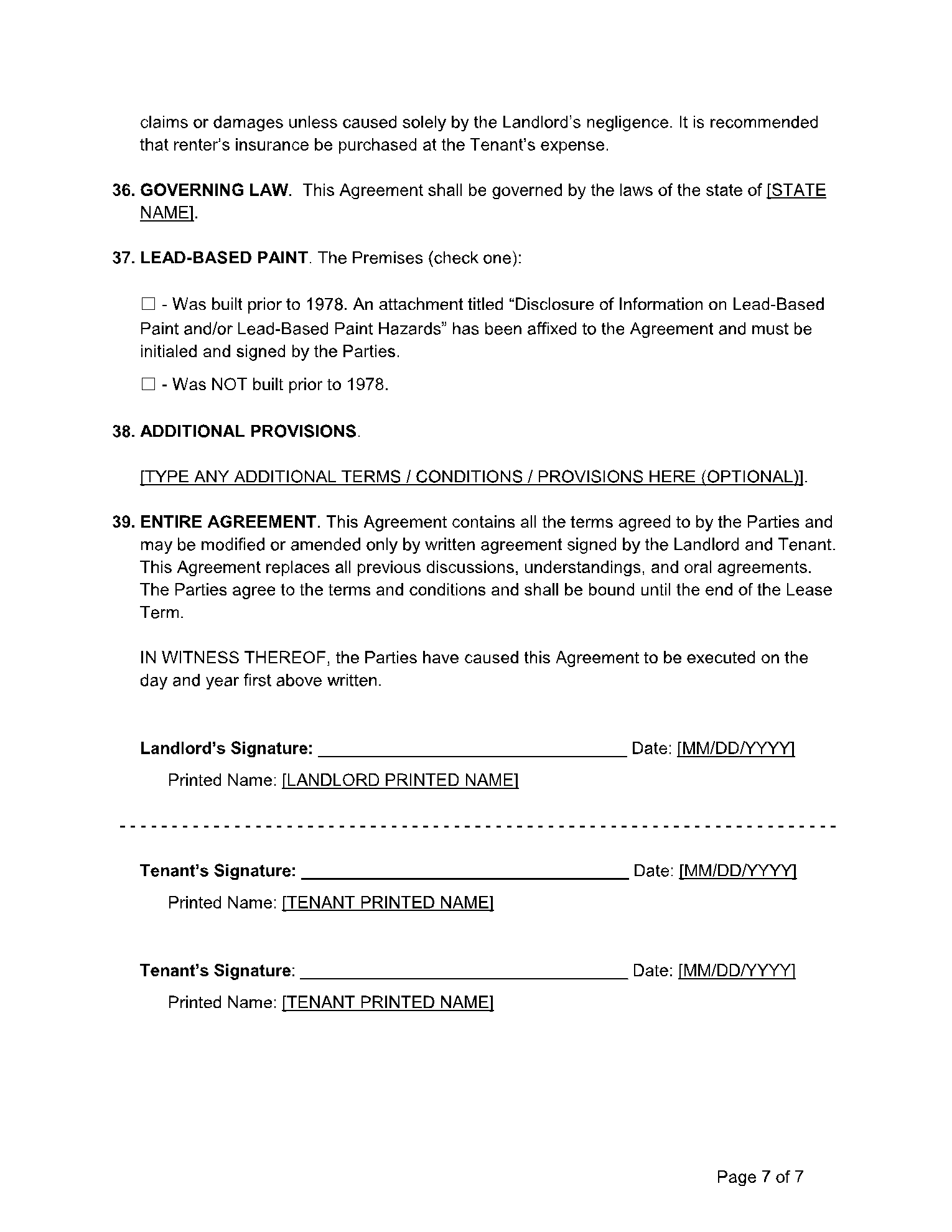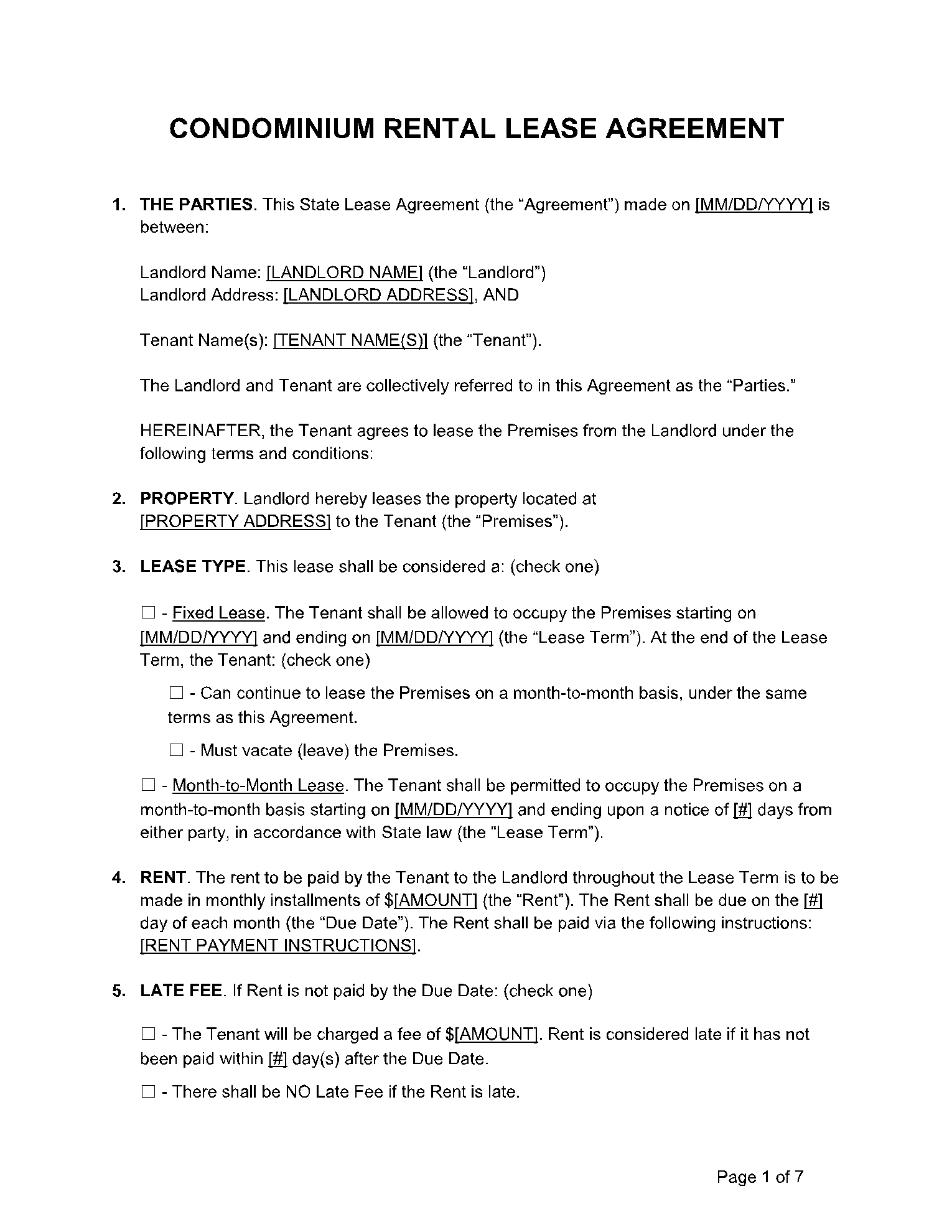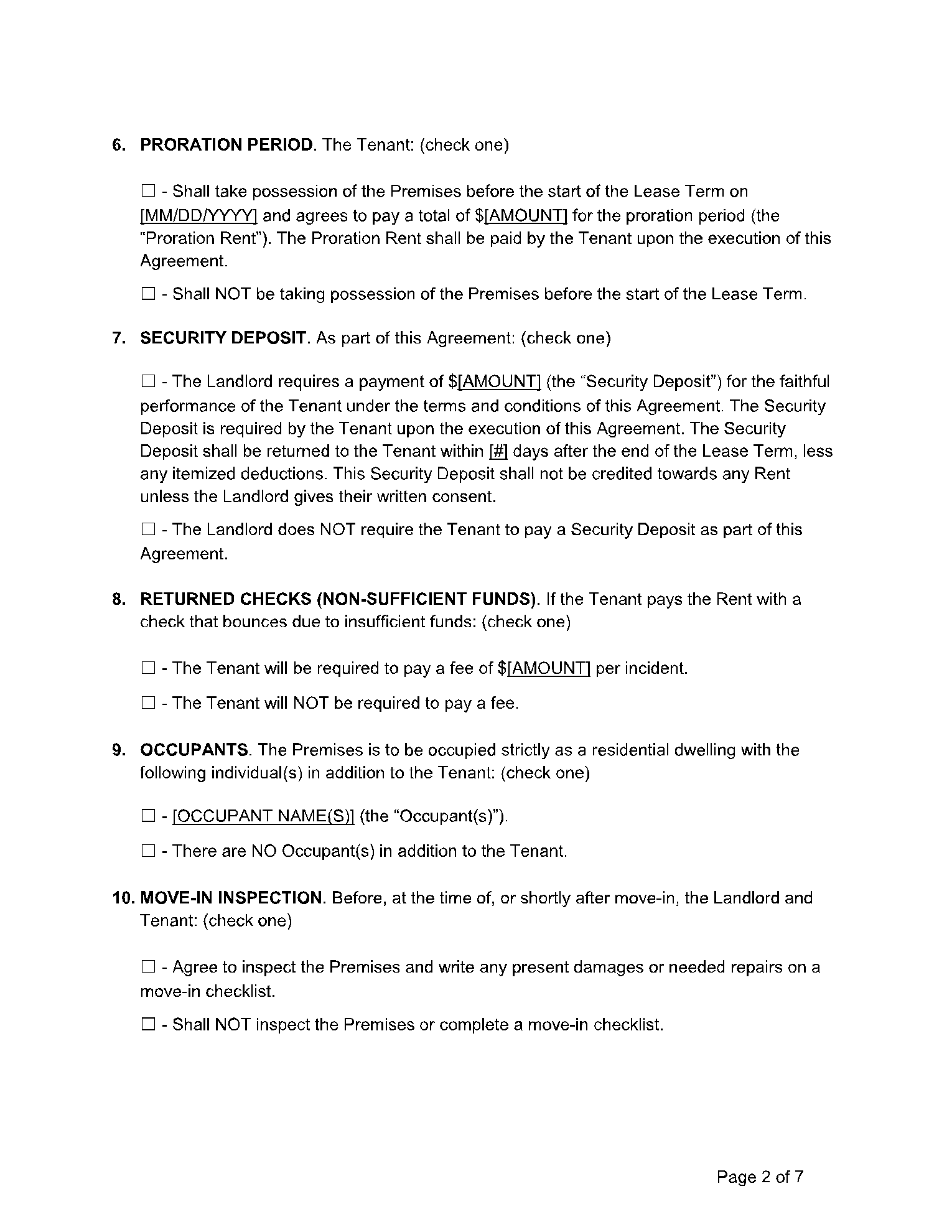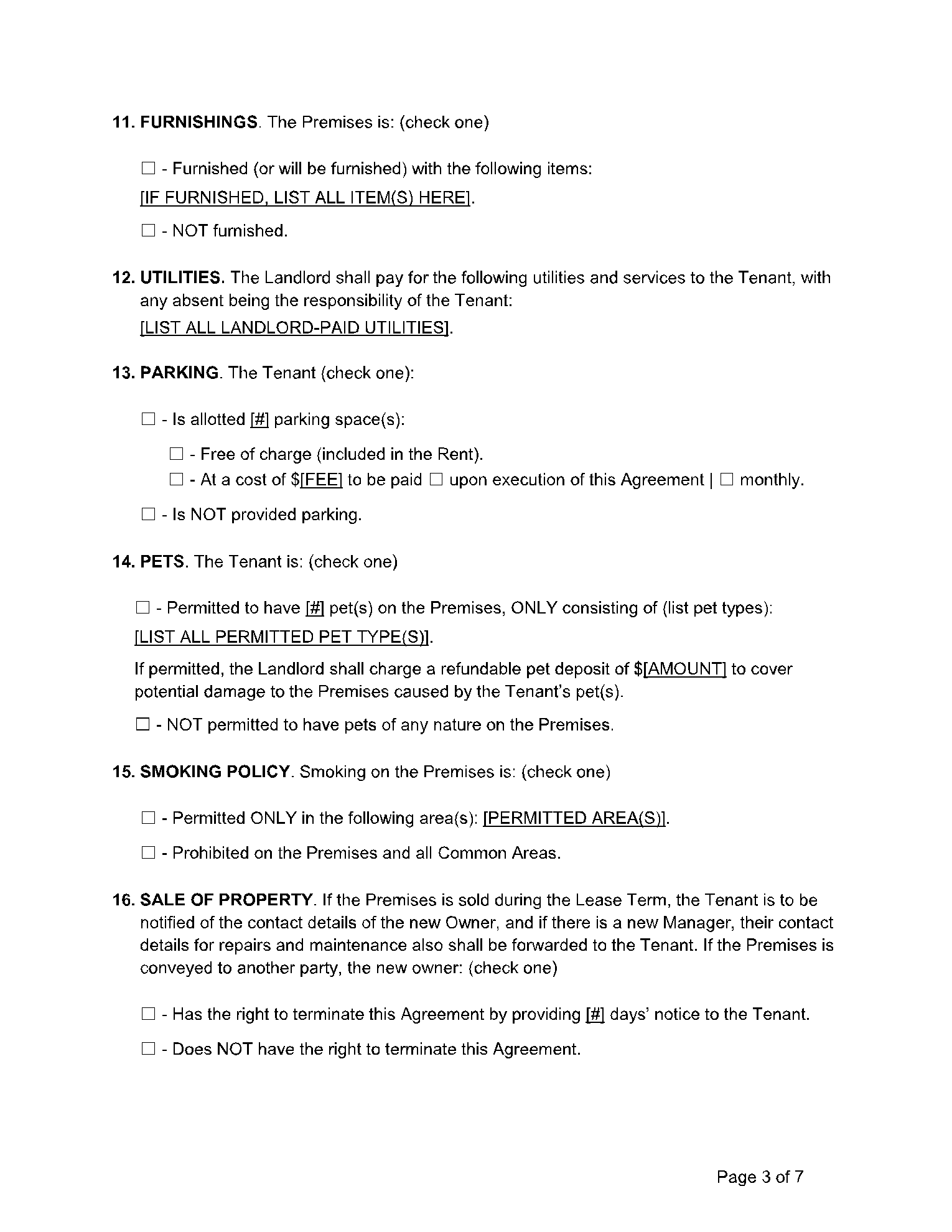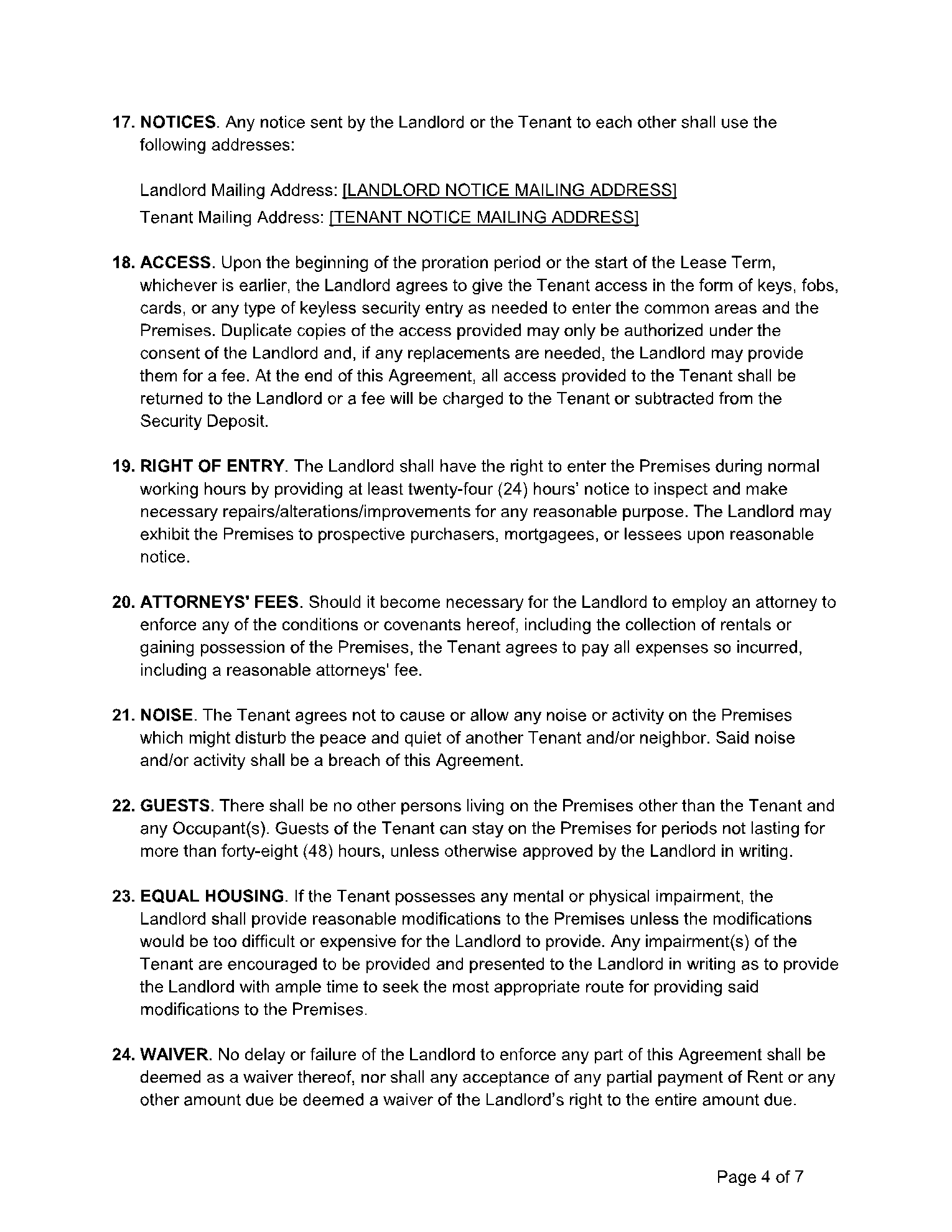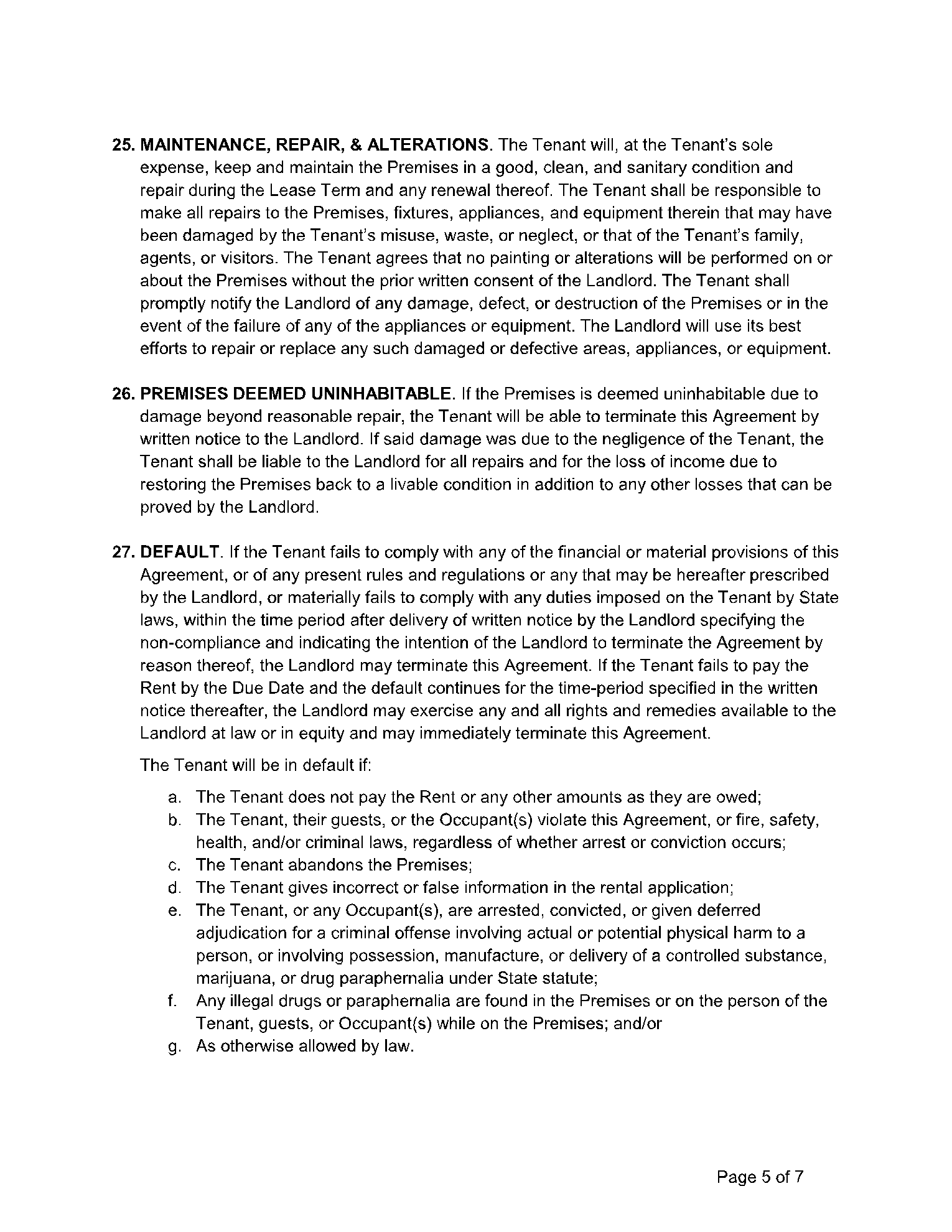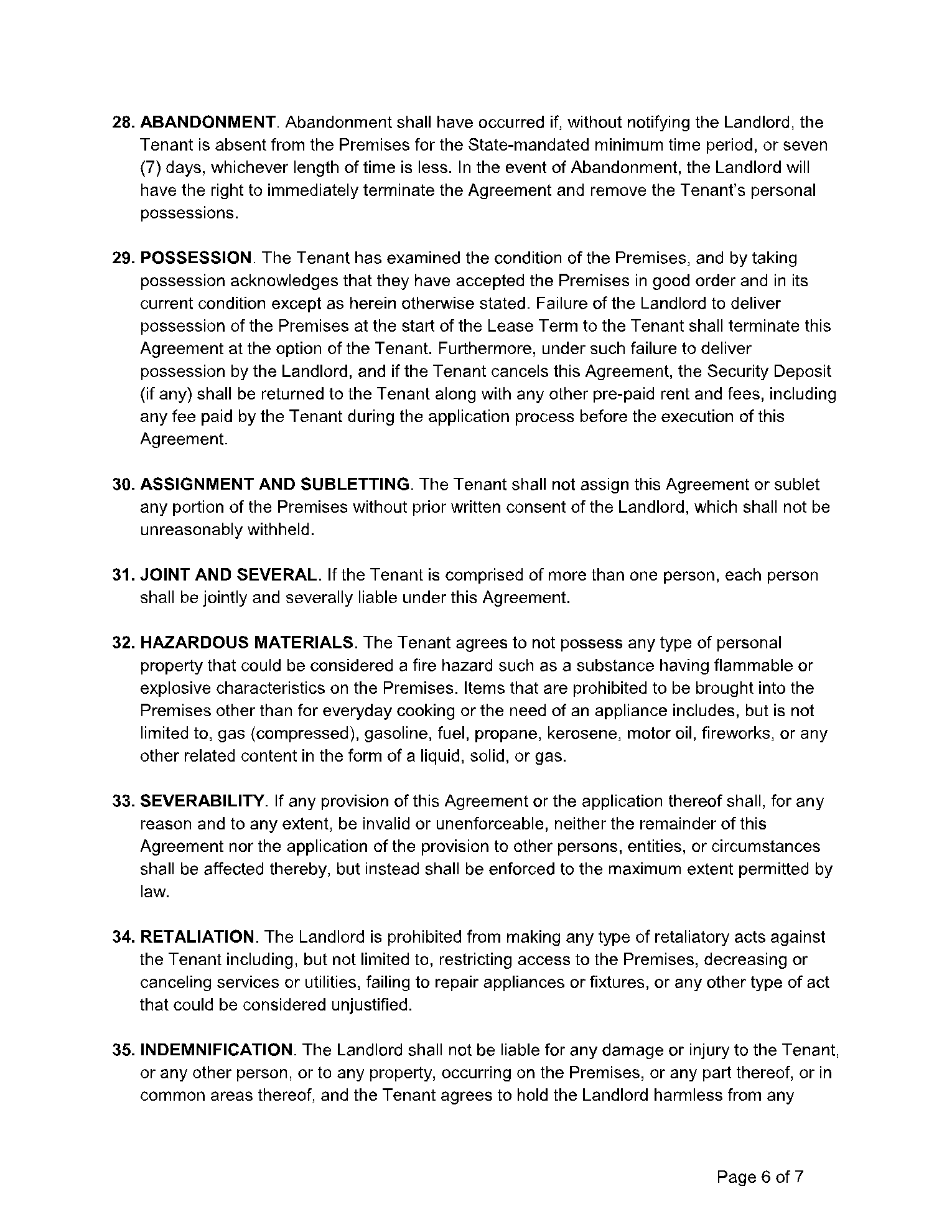Do you want to create a condo lease agreement? It is a very common requirement but not that easy to fulfill without legal knowledge. Condo lease agreements need to abide by local laws and have to be well-written.
Therefore, in order to create a condo lease agreement, it is important to use a condo lease agreement template. You can download this template below and edit it as per your requirements.
If you want to know more about condo lease agreements and why they are so important, you can keep reading below:
What Is a Condo Lease Agreement?
A condo lease agreement defines the terms of tenancy between a renter and a condo owner. In plain definition, a condo is a residential property located in a condominium unit, sharing the rights to a common area of the property.
These agreements are legally binding documents and make sure that there is no conflict later on between the two parties. In case of a conflict, the agreement can also provide a resolution to the issue.
Download Our Condo Lease Agreement PDF
Ditch your old-fashioned leasing process by using our free and complete condo lease agreement. Have your tenants sign on it electronically, more quickly and easily.
What Is Included in a Condo Lease Agreement?
Important components of a condo lease agreement that should not be missed include:
Identification of Parties
A condo lease agreement should define the tenant and the renter with their name and contact information. There should be space provided for the signature of each party as well.
Lease Tenure
The agreement should state the time period for which the lease is valid. This can be negotiated between the tenant and the landlord beforehand.
Rent
The amount of rent and the date of the rent are important to state in the lease agreement. If the landlord intends to charge any late fee for the rent, the lease agreement should mention it along with the grace period (if any).
Common Area Maintenance Fee
Condo owners have to pay this fee to the condo association. Therefore, the landlord charges this fee from the tenant and it is laid out in the lease agreement as well. This fee goes towards the maintenance of common areas such as hallways, parking, elevators, etc.
Renewal Option
Renewal option in a condo lease agreement outlines the terms and conditions in case the landlord and the tenant wish to extend the lease. If there is no renewal option in the lease agreement, the landlord has no obligation to extend the lease.
Guarantor
Including a guarantor in the lease agreement is important. If the renter fails to pay their rent, the guarantor has to pay the rent as well as the maintenance fee that is due.
There can be additional clauses in a condo lease agreement, such as pet policy, drinking and smoking rules, etc. It all depends on the local housing rules and the things that the landlord or tenant deem important to be in the lease agreement.
When to use a Condo Lease Agreement?
A condo lease agreement may be needed if you are a:
- Condo owner looking forward to renting your condo to a tenant
- Tenant looking forward to renting a condo
- Broker facilitating tenancy arrangement between the landlord and the tenant
- Real estate agency which requires such agreement for its customers
In either case, having a condo lease agreement is quite important when renting a condo is involved.
Why Sign a Condo Lease Agreement?
Signing a condo lease agreement is very important because it defines the rules of a condo tenancy. The landlord and the tenant learn about their duties and obligations after singing a condo lease agreement.
Due to a condo lease agreement, the landlord and the tenant cannot refuse the terms that they have agreed to in the condo lease agreement.
A condo lease agreement also lays out other specifics such as rent and its due date. This makes things clear for the tenant and they know when to pay the rent. In case they are unable to pay the rent, having a guarantor ensures financial security to the landlord.
Download Our Condo Lease Agreement PDF
Ditch your old-fashioned leasing process by using our free and complete condo lease agreement. Have your tenants sign on it electronically, more quickly and easily.
Wrapping Up
Condo lease agreements are essential documents when renting a condo. It is vital for these agreements to be written well and abide by the local laws. This is why you need to have a condo lease agreement template ready if you want to create a condo lease agreement. You can download this template from CocoSign.
CocoSign offers you downloadable document templates that you can edit as per your requirements. There are agreement templates for any situation where you might need one.
Go ahead and download the condo lease agreement template from CocoSign right away! You can browse through CocoSign’s vast template library as well.
DOCUMENT PREVIEW
CONDOMINIUM LEASE AGREEMENT
The Parties. This agreement, entered on the ____ day of ________________, 20____, between ____________________ with a mailing address of ____________________ in the City of ____________________ State of ____________________ (Hereinafter known as the ‘Tenant’ ) and ____________________ with a mailing address of ____________________ in the City of ____________________ State of ____________________ (Hereinafter known as the ‘Landlord’ ) hereby agree to the following:
I. Premises. The premises is located at ____________________ in the City of ____________________ State of ____________________ Unit Number (#)
in a condominium association known as
(Hereinafter known as the ‘Premises’ ).
II. Term. The start of this lease shall begin on the ___ day of ________________, 20____ and continue: (check one) ☐ - Until the ___ day of ________________, 20____.
☐ - As a month-to-month agreement in accordance with State laws.
III. Rent. The total rent due during the term of this agreement shall be ____________________ Dollars ($___________) payable in monthly in the amount of ____________________ Dollars ($___________) to the Landlord in the following manner:
_____________________________________________________________ .
Rent shall be paid in full on the ____ of every month. No amounts may be deducted from the monthly rent unless the Landlord consents to in writing.
IV. Security Deposit. The Landlord requires the Tenant to pay a security deposit due at lease signing in the amount of ____________________ Dollars ($___________):
In addition, the Landlord requires the Tenant pay the following: (check all that apply)
 ☐ - First month’s rent in the amount of Dollars
☐ - First month’s rent in the amount of Dollars
($___________).
 ☐ - Last month’s rent in the amount of Dollars
☐ - Last month’s rent in the amount of Dollars
($___________).
The Landlord agrees to return the Security Deposit within ____ days after the lease expires. Tenant agrees to allow the Landlord to deduct any damages found on the property after move-out with receipt for every repair.
V. Garage/Parking. The Tenant shall have the right to ____ parking spaces located on the Premises. The tenant shall be charged a fee on a monthly basis of ____________________ Dollars ($___________), in addition to the rent payment, for use of the space. Only vehicles registered with the Landlord and/or Condominium Association will be allowed to park in the areas designated unless consent is given.
VI. Occupants. The following individuals shall be allowed to live in the Premises:
___________________, ___________________, ___________________,
___________________, ___________________, ___________________,
with a maximum of ____ people to be staying on any given night.
VII. Services/Utilities. The Landlord shall be responsible for providing the following: ☐ - Water ☐ - Electricity ☐ - Sewer ☐ - Cable ☐ - Internet ☐ - Heat ☐ - Air Conditioning (AC) ☐ - Trash Removal ☐ - Electricity
☐ - Telephone ☐ - Other _________________________________________.
In addition, the Landlord shall provide the following appliances: ___________
_____________________________________________________________ .
The Landlord agrees to keep the Premises in good condition and to repair any services temporarily interrupted. Any damage caused by nature or any wear and tear shall not affect the payment of rent by the Tenant as long as Landlord is pursuant to State laws.
VIII. Use. The Tenant shall only be able to use the Premises for residential purposes.
IX. Possession. The Tenant shall obtain possession of the Premises on the start date stated in Section II. If not, the Tenant may seek damages from the Landlord. In addition, the Tenant is required to take possession of the Premises within seven (7) days or be in default of this agreement and forfeit their Security Deposit with the Landlord.
X. Condition. Tenant understands that they will be accepting the Premises in its “as is” condition. Tenant acknowledges that they have conducted a thorough inspection and found it to be in good repair and condition for the use as a residence.
XI. Alterations. Tenant shall maintain and keep in good condition all appliances, furnishings (if any), and personal property until the end period. If the Tenant damages any part of the Premises due to negligence the Landlord may fix the issue and charge the Tenant additional rent. Tenant shall not paint the Premises or make any modifications without the written consent of the Landlord.
XII. Pets. The Landlord: (check one)
☐ - Allows pets on the property with an additional fee of
____________________ Dollars ($___________).
☐ - Shall allow only a certain pet described as _____________ with an additional fee of ____________________ Dollars ($___________).
☐ - Prohibits any type of pet on the Premises except for those used for special needs in accordance with State or Federal law.
XIII. Liability. The Landlord is not liable for any loss or damage to the Tenant’s, or their guests, personal property unless the loss is a direct result of the Landlord’s action. The Tenant is liable for the acts of anyone listed in this Agreement in addition to any guest that they should allow on the Premises.
XIV. Entry. Per State law the Landlord has the right to enter the property by giving the Tenant proper notice for any repair, inspection, extermination, installation, or any entry deemed necessary. The Landlord will have the right to show the Premises to prospective Lessee’s at the end of the Agreement’s term with notice being given prior to every entry.
XV. Subletting. The Landlord does not authorize the Tenant to have the right to sublease the Premises unless written consent is given. The Landlord has the right to withhold consent for any reason.
XVI. Access. Upon the authorization of this Agreement and all funds being made available through the items checked in Section IV the Tenant shall receive access to the Premises on the start date. Tenant shall not alter any locks or make duplicate keys without the Landlord’s prior knowledge and consent.
XVII. Signage. The Landlord has the right to place ‘For Rent’ or ‘For Sale’ signs on the Premises and/or conspicuously placed in the windows. The Tenant does not have right to place any signs or place personal property in the windows or outside of the Premises.
XVIII. Notices. If any official notice shall be sent from one party to another the addresses used shall be the details located ‘The Parties’ . If there is to be any change of address it is to be notified by sending notice via mail with return receipt.
XIX. Common Areas. If there are areas that are maintained by the Condominium Association and usable by all residents the Tenant shall have the right to use said areas under the same rights as Landlord.
